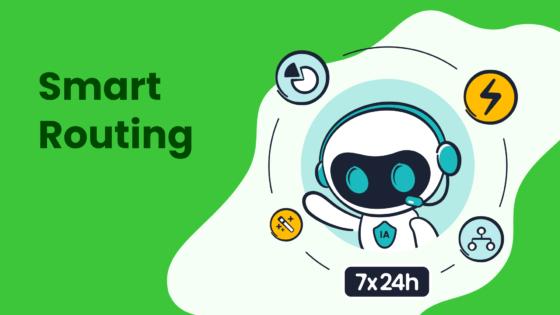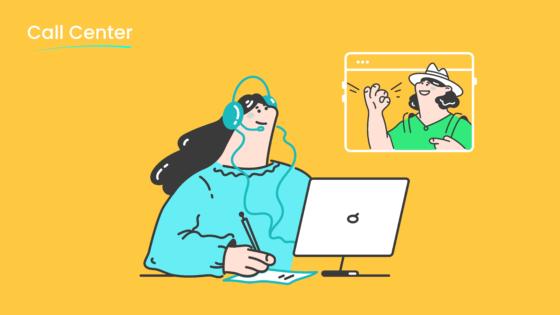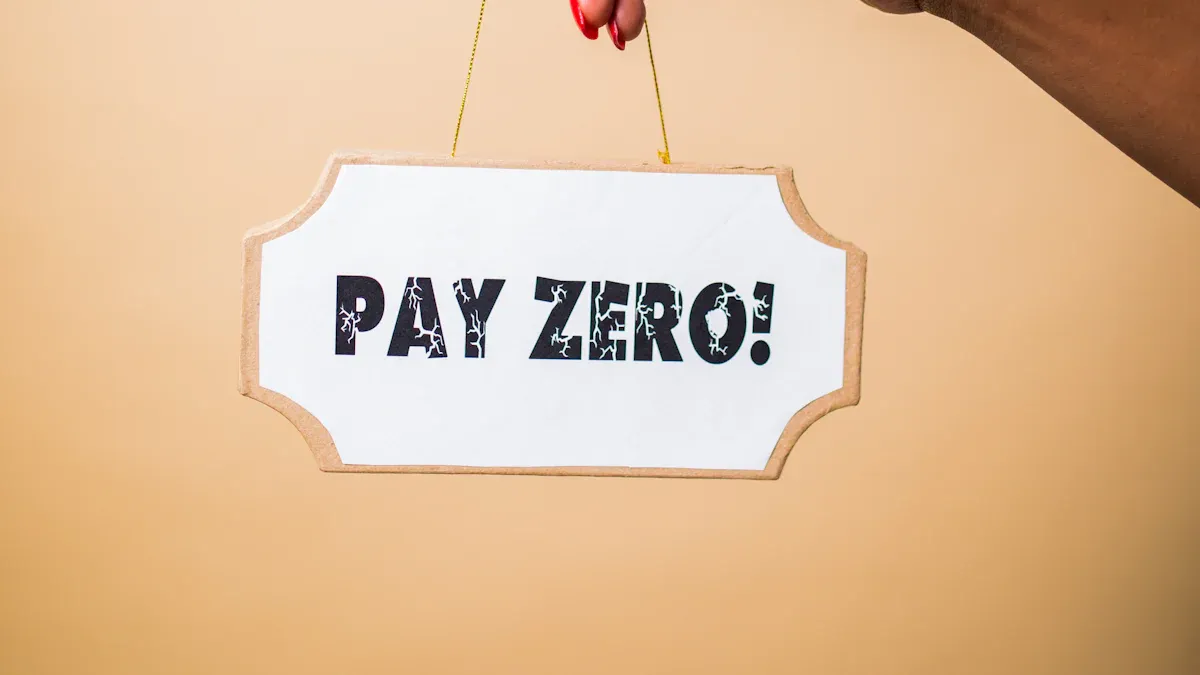A Comprehensive Guide to Customer Retention Programs for Sustainable Growth

Customer retention plans are strategies designed to keep customers loyal to your business. These plans focus on building long-term relationships by enhancing satisfaction and delivering consistent value. Loyal customers are more likely to return, boosting engagement and contributing to sustainable growth. For instance, a loyal subscriber can generate $3,000 in lifetime revenue when purchases average $50 monthly over five years.
Retaining customers is also cost-effective. Existing customers drive 65% of revenue, while new ones contribute only 35%. Selling to loyal customers has a 60–70% success rate, compared to 5–20% for new customers. With acquisition costs rising by 60% in five years, focusing on retention ensures better returns on investment. Tools like Sobot can help increase retention while enhancing customer satisfaction.
Understanding Customer Retention Programs
What Is a Customer Retention Plan?
A customer retention plan is a strategic framework designed to keep your customers engaged and loyal to your business. Unlike customer acquisition, which focuses on attracting new customers, retention strategies aim to nurture existing relationships. These plans often include personalized experiences, loyalty programs, and proactive communication to ensure customers feel valued.
Retention models help predict customer behavior and improve retention rates. For example:
- Propensity models predict the likelihood of future actions based on past behavior.
- Logistic regression models assess binary outcomes, such as whether a customer will churn.
- Uplift models measure the impact of specific retention strategies on customer behavior.
To create an effective customer retention plan, you should focus on understanding customer needs, addressing their concerns, and consistently delivering value. By doing so, you can build trust and foster long-term loyalty.
Tip: Sharing customer data across your organization can help you identify trends and respond to customer needs more effectively.
Key Features of Successful Retention Programs
A successful loyalty program or retention strategy includes several key features that ensure its effectiveness. These features not only enhance customer satisfaction but also drive long-term loyalty. Here are some essential elements:
| Key Feature | Description |
|---|---|
| Customer Lifetime Value (CLV) | Estimates the total revenue anticipated from a customer throughout the relationship, reflecting efforts to maintain long-term satisfaction and loyalty. |
| Net Promoter Score (NPS) | Assesses overall customer experience based on survey data, categorizing customers into Promoters, Passives, and Detractors based on their likelihood to recommend the product or service. |
| Strong Onboarding Experience | A smooth onboarding process sets the tone for the customer relationship, reducing regret and cancellations. |
| Quick Issue Resolution | Ensures customers feel heard and that their issues are resolved swiftly, enhancing loyalty. |
| Rewarding Loyalty | Tailoring loyalty programs to customer values and implementing tiered systems encourages commitment and reduces churn. |
For example, loyalty programs that reward repeat purchases or offer exclusive benefits can significantly boost retention. According to recent data, 83% of customers influenced by loyalty programs make repeat purchases, and 73% adjust their spending to maximize loyalty benefits.
How Retention Programs Drive Customer Loyalty
Retention programs play a pivotal role in fostering customer loyalty by creating meaningful connections and delivering consistent value. When you implement a well-designed retention strategy, you can transform one-time buyers into lifelong advocates for your brand.
Here’s how retention programs contribute to loyalty:
- Enhanced Customer Experience: By focusing on personalized interactions and quick issue resolution, you can ensure customers feel valued. For instance, businesses that prioritize excellent customer experiences see higher retention rates.
- Increased Engagement: Loyalty programs encourage customers to interact with your brand more frequently. Repeat customers spend three times more than one-time shoppers, highlighting the financial benefits of retention.
- Emotional Connection: Retention programs that align with customer values build emotional bonds. This connection makes customers 70% more likely to make repeat purchases.
- Proactive Churn Prevention: Identifying at-risk customers and addressing their concerns can prevent churn. Save campaigns and personalized outreach are effective tools for this purpose.
Retention programs also drive profitability. A 5% increase in customer retention can result in a 25% uplift in profit, according to Bain & Company. By investing in these programs, you not only retain customers but also create a foundation for sustainable growth.
Note: Customers who feel uncared for are more likely to leave. Ensure your retention strategies prioritize empathy and proactive communication.
The Importance of Customer Retention Programs
Cost Savings and Efficiency
Customer retention programs save costs and improve efficiency by focusing on existing customers. Acquiring new customers is significantly more expensive than retaining current ones. Studies show that it costs 6 to 7 times more to acquire a new customer than to keep an existing one. Additionally, a 2% increase in retention can have the same financial impact as reducing costs by 10%. Repeat customers also spend 33% more than new ones, making them a valuable asset for your business.
| Statistic | Source |
|---|---|
| A 5% reduction in the customer defection rate can increase profits by 25-95%. | Bain & Co/HBR |
| A 2% increase in customer retention has the same effect as decreasing costs by 10%. | Emmet and Mark Murphy |
| It is 6 to 7 times more expensive to acquire new customers than it is to keep a current one. | White House Office of Consumer Affairs |
| 80% of your future profits will come from just 20% of your existing customers. | Gartner |
| Repeat customers spend 33% more compared to new customers. | Laura Lake |
By investing in strong customer retention strategies, you can reduce costs, improve efficiency, and build a loyal customer base that drives sustainable growth.
Enhancing Customer Lifetime Value (CLV)
Customer retention directly impacts Customer Lifetime Value (CLV), which measures the total revenue a customer generates over their relationship with your business. Retaining customers is more effective for revenue growth than acquiring new ones. For example, a client on a $100/month subscription generates $2,400 over two years. Companies that prioritize retention see higher CLV and long-term profitability.
- Retaining existing customers is more effective for revenue growth than acquiring new ones.
- 44% of companies prioritize customer acquisition over retention, while only 16% focus on reducing churn.
- The average customer lifetime value for a client on a $100/month subscription over 2 years is $2,400.
Focusing on retention allows you to maximize the value of each customer, ensuring they remain loyal and engaged with your brand.
Building Brand Advocacy and Emotional Connections
Retention programs help build emotional connections with customers, turning them into brand advocates. Emotions play a critical role in decision-making. Customers often choose brands that resonate with their values and evoke positive feelings. For example, a major bank increased credit card use among Millennials by 70% by creating an emotionally connected product. Similarly, a household cleaner reversed market share losses by focusing on emotional messaging.
Understanding the emotional aspect of customer relationships is essential. The excitement of unboxing a product or the joy of using a trusted service strengthens customer trust and loyalty. These emotional ties encourage customers to recommend your brand, creating a loyal customer base that supports your business growth.
Tip: Focus on building customer loyalty by aligning your retention strategies with customer values and emotions. This approach fosters trust and long-term relationships.
Designing and Implementing an Effective Customer Retention Plan

Identifying Customer Needs and Preferences
Understanding your customers' needs is the foundation of any successful customer retention strategy. When you know what your customers value, you can tailor your offerings to meet their expectations and build stronger relationships. This process begins with a thorough analysis of customer preferences and behaviors.
- Conducting a customer needs analysis helps you uncover what your customers truly want from your products or services. This insight ensures your offerings align with their expectations.
- Using the means-end approach allows you to identify the features that lead to customer satisfaction and influence purchasing decisions.
- Gathering feedback through surveys, focus groups, or social media interactions provides valuable data on customer preferences.
For example, if your customers prioritize convenience, you can focus on streamlining your processes or offering faster delivery options. By addressing these needs, you not only enhance customer loyalty but also boost customer retention.
Tip: Share customer insights across your organization to ensure every team understands and responds to customer needs effectively.
Choosing the Right Retention Program for Your Business
Selecting the right retention program depends on your business model and the unique characteristics of your customer base. A well-chosen program can significantly improve customer loyalty and retention rates. To make the best choice, consider the following strategies:
| Strategy | Description |
|---|---|
| Customer Understanding | Tailor retention programs to meet customer needs and preferences. |
| Personalization | Use customer data to create personalized experiences that foster loyalty. |
| Data Analytics | Leverage analytics to measure program success and refine strategies. |
For instance, TOMS has successfully built a loyal customer base by aligning its business model with a meaningful mission. Their "One for One" program resonates deeply with customers who value social impact. Similarly, HubSpot uses social proof, such as customer testimonials and case studies, to strengthen relationships and encourage loyalty.
When choosing a retention program, focus on creating value for your customers. Loyalty programs that offer personalized rewards or exclusive benefits can make your customers feel appreciated. This approach not only improves customer retention but also enhances their overall experience with your brand.
Note: Retention programs are not one-size-fits-all. Regularly evaluate your program's effectiveness and adjust it to meet changing customer expectations.
Aligning Incentives with Customer Behavior
Aligning incentives with customer behavior ensures your retention efforts drive meaningful engagement. Incentives should motivate customers to take actions that benefit both them and your business. To achieve this alignment, follow these best practices:
- Integrate data from multiple sources to gain a comprehensive view of customer behavior.
- Personalize incentives based on customer preferences. For example, offer discounts on products they frequently purchase.
- Regularly review your incentive structure to ensure it remains relevant and effective.
- Use analytics tools to track the performance of your retention program.
- Experiment with different incentive structures through A/B testing.
- Collect customer feedback to refine your approach and improve results.
For example, a subscription-based business might offer a free month of service to customers who refer friends. This type of incentive not only rewards loyal customers but also encourages them to promote your brand. By aligning incentives with customer behavior, you can boost customer retention and foster long-term loyalty.
Tip: Focus on creating incentives that resonate with your customers' values. This approach strengthens emotional connections and encourages repeat engagement.
Leveraging Technology with Sobot’s Voice/Call Center

Technology plays a vital role in enhancing customer retention strategies. Sobot’s Voice/Call Center offers advanced tools that help you streamline communication and improve customer loyalty. By integrating intelligent features like AI-powered Voicebots and smart call routing, you can deliver personalized experiences that resonate with your customers.
Sobot’s Voice/Call Center simplifies customer interactions by unifying all communication channels into one workspace. This allows your team to manage calls, track customer data, and resolve issues efficiently. For example, the platform’s intelligent IVR system lets you customize greetings and route calls to the right agents, ensuring faster resolutions. With a 99.99% system uptime, you can rely on Sobot’s stability to maintain seamless operations.
Global businesses benefit from features like time zone support and access to international phone numbers. These capabilities enable you to cater to customers across different regions without compromising service quality. Additionally, the AI-powered Voicebot enhances customer retention by recognizing intent and providing instant solutions, reducing the need for human intervention.
Sobot’s analytics tools help you monitor call data and identify trends. By analyzing customer behavior, you can refine your loyalty programs and address pain points proactively. For instance, tracking call patterns might reveal common issues that require immediate attention. This data-driven approach ensures your retention strategies align with customer needs.
Tip: Use Sobot’s Voice/Call Center to automate repetitive tasks and free up your team to focus on building stronger relationships with customers.
Testing, Iterating, and Scaling Your Program
Customer retention programs thrive on continuous improvement. Testing, iterating, and scaling your strategies allow you to adapt to changing customer needs and maximize their effectiveness. Businesses that embrace this approach often see significant improvements in customer loyalty and retention rates.
Start by testing different elements of your retention program. For example, experiment with various loyalty programs to identify which incentives resonate most with your customers. Use A/B testing to compare the performance of personalized offers versus generic discounts. This method helps you pinpoint the strategies that drive the highest engagement.
Iterating involves refining your program based on feedback and data analysis. Ritual, a subscription-based company, reduced data pipeline issues by 95%, enabling timely cohort analysis and retention decision-making. Personalized messaging to at-risk customers improved retention and boosted lifetime value over a few months. These adjustments demonstrate the power of iteration in enhancing customer retention strategies.
Scaling your program ensures it reaches a broader audience without losing effectiveness. Sobot’s Voice/Call Center supports scalability by providing tools for bulk outbound tasks and seamless integration with CRM systems. For instance, you can automate follow-ups for loyalty program members, ensuring consistent engagement across large customer bases.
Note: Rapid testing and adjustments can help you monitor and reduce churn effectively. Ritual’s data team increased their velocity threefold, enabling faster iterations and better customer journey management.
By testing, iterating, and scaling your retention program, you create a dynamic strategy that evolves with your customers. This approach not only improves retention rates but also strengthens customer loyalty, ensuring sustainable growth for your business.
Best Practices for Loyalty and Retention
Personalizing Customer Experiences
Personalization is one of the most effective ways to keep customers engaged and improve retention. When you tailor experiences to individual preferences, customers feel valued and appreciated. This emotional connection fosters loyalty and increases satisfaction. For example, 76% of consumers are more likely to spend more when they receive personalized experiences. Additionally, personalized engagement can reduce attrition rates by 20% within the first year.
To personalize the customer experience, use data to understand customer behavior. Predictive analytics can help you anticipate needs and deliver proactive solutions. Mobile loyalty apps are another powerful tool. These apps provide convenience and personalized offers, making it easier for customers to stay connected with your brand. In the high-tech sector, companies that prioritize personalization have seen significant improvements in revenue and customer loyalty.
Tip: Retaining just 5% more customers can boost revenue by 25%. Focus on creating personalized experiences to maximize retention and satisfaction.
Gathering and Acting on Customer Feedback
Listening to your customers is essential for improving satisfaction and loyalty. Gathering feedback allows you to identify pain points and areas for improvement. Acting on this feedback shows customers that their opinions matter, which strengthens trust and engagement. For example, closing the loop on customer feedback demonstrates that you value their input, encouraging ongoing participation.
| Feedback Strategy | Impact on Retention |
|---|---|
| Close the loop on feedback | Shows customers their input matters, improving satisfaction and loyalty. |
| Act on feedback to drive continuous improvement | Reinforces trust and encourages long-term engagement. |
| Analyze feedback to identify satisfaction drivers | Helps target improvements that enhance retention. |
| Track complaint resolution metrics | Ensures timely issue resolution, boosting customer satisfaction. |
By regularly analyzing feedback from surveys, social media, and other channels, you can make informed decisions that enhance the customer experience. This approach not only improves satisfaction but also increases retention rates.
Monitoring Key Metrics and KPIs
Tracking the right metrics is crucial for measuring the success of your loyalty and retention strategies. Key performance indicators (KPIs) provide valuable insights into customer behavior and satisfaction. For example, the Customer Retention Rate (CRR) measures the percentage of customers you retain over a specific period. A high CRR indicates strong loyalty and engagement.
| KPI | Description |
|---|---|
| Customer Retention Rate (CRR) | Measures the percentage of customers retained, reflecting loyalty and satisfaction. |
| Monthly Recurring Revenue (MRR) | Represents predictable monthly revenue, showing the impact of retention on revenue growth. |
| Customer Lifetime Value (CLV) | Estimates the total revenue a customer generates, highlighting the importance of retention efforts. |
Monitoring these metrics helps you identify trends and adjust your strategies to improve retention. For example, tracking complaint resolution metrics ensures issues are addressed promptly, leading to higher satisfaction. By focusing on these KPIs, you can create a data-driven approach to loyalty and retention.
Note: Use retention rates and repeat purchases as indicators of long-term satisfaction and loyalty. These metrics directly correlate with the success of your retention strategies.
Staying Agile with Market Trends and Customer Expectations
Staying agile in today’s fast-changing market is essential for meeting customer expectations and maintaining a competitive edge. Businesses that adapt quickly to trends and customer needs position themselves for long-term success. Agility allows you to respond to challenges, seize opportunities, and deliver value consistently.
To stay ahead, you must proactively monitor market trends. This approach helps you anticipate changes and adjust your strategies accordingly. For example:
- Businesses that track trends can identify emerging customer preferences early.
- Real-time insights into market shifts enhance decision-making and reduce risks.
- Agile practices enable quick pivots, ensuring your business remains relevant.
Digital transformation plays a critical role in agility. By integrating digital technologies into your operations, you can streamline processes and improve responsiveness. This transformation not only enhances efficiency but also empowers you to deliver better customer experiences. Companies that embrace digital tools often outperform competitors who rely on outdated methods.
Real-time data is another powerful tool for agility. It allows you to detect issues immediately and take action before they escalate. For instance:
- Monitoring customer feedback in real time can reveal spikes in complaints.
- Early detection enables you to investigate and resolve problems quickly.
- Proactive decision-making reduces the likelihood of customer dissatisfaction.
Adopting an agile mindset also means staying flexible and open to change. Regularly reviewing your strategies ensures they align with evolving customer expectations. By doing so, you can build trust and foster loyalty, even in a dynamic market.
Tip: Use tools like Sobot’s analytics to track trends and customer behavior. This data-driven approach helps you stay agile and responsive, ensuring your business thrives in any market condition.
Real-World Examples of Customer Retention Success

How Samsung Achieved 97% Customer Satisfaction with Sobot
Samsung’s collaboration with Sobot demonstrates how technology can transform customer retention. By integrating Sobot’s all-in-one contact center solution, Samsung streamlined its communication channels and improved agent efficiency by 30%. This efficiency allowed agents to focus on delivering personalized support, which played a key role in achieving a 97% customer satisfaction rate.
Sobot’s platform also enabled Samsung to unify customer data across systems, reducing repetitive interactions. Features like intelligent chatbots handled routine queries, freeing agents to address complex issues. VIP customers received customized video support, further enhancing their experience. These efforts not only improved customer engagement but also strengthened loyalty by ensuring every interaction added value.
Key Takeaway: Leveraging advanced tools like Sobot’s solutions can help you enhance customer retention by improving efficiency and delivering personalized experiences.
Lessons from Starbucks Rewards and Amazon Prime
Starbucks Rewards and Amazon Prime are prime examples of how loyalty programs can drive customer retention. Both companies have designed programs that align with customer preferences, creating a seamless and rewarding experience.
| Loyalty Program | Key Features | Metrics |
|---|---|---|
| Starbucks Rewards | Mobile-first engagement, seamless payments | 52.3% of in-store revenue from rewards members, $2.65B stored value in app wallets, 30% higher spend from members |
| Amazon Prime | Subscription model with bundled benefits | 200M+ active members, $1,400 average annual spend, 2.3x higher purchase frequency, 85% renewal rate after year one |
Starbucks uses its mobile app to simplify orders, payments, and rewards tracking. This approach keeps customers engaged while encouraging repeat visits. Amazon Prime, on the other hand, bundles benefits like free shipping and exclusive content, making it indispensable for its members. Both programs show how aligning incentives with customer behavior can boost loyalty and retention.
Pro Tip: Focus on creating loyalty programs that offer tangible value and convenience to your customers.
Insights from Industry Leaders on Loyalty and Retention
Industry leaders like Netflix, Airbnb, and Sephora have mastered customer retention by personalizing experiences and rewarding loyalty. Their strategies highlight the importance of understanding customer behavior and delivering tailored solutions.
| Company | Strategy Description |
|---|---|
| Netflix | Uses algorithms to personalize user experience by suggesting movies based on viewing and search history. |
| Amazon | Recommends products based on purchase history and browsing behavior, enhancing cross-sell and repeat purchases. |
| Airbnb | Engages customers through personalized email marketing campaigns based on location and travel preferences. |
| Starbucks | Utilizes a mobile app for orders, payments, and rewards, keeping customers informed about promotions. |
| Sephora | Offers a Beauty Insider program that rewards customers with points for purchases, incentivizing repeat buys. |
| Southwest Airlines | Implements a Rapid Rewards program that rewards customers with points for flights, increasing customer loyalty. |
For example, Netflix’s recommendation engine keeps users engaged by suggesting content tailored to their preferences. Similarly, Sephora’s Beauty Insider program incentivizes repeat purchases by rewarding customers with points. These strategies emphasize the value of personalization and rewards in building long-term loyalty.
Actionable Insight: Use data-driven insights to personalize customer engagement and create programs that resonate with your audience.
Customer retention programs play a vital role in driving sustainable growth. By focusing on existing customers, you can reduce costs, improve satisfaction, and build long-term loyalty. Responsive feedback increases retention by 25–30%, while personalized strategies boost satisfaction by 20%. These efforts create a foundation for consistent revenue and stronger relationships.
Aligning your retention strategies with customer needs ensures meaningful engagement. Tools like Sobot’s solutions simplify communication and enhance loyalty. Start refining your approach today to maximize retention and secure lasting growth.
FAQ
What is the main goal of a customer retention program?
The primary goal is to keep your customers loyal by enhancing their experience and satisfaction. Retention programs focus on building long-term relationships, increasing repeat purchases, and fostering brand advocacy. This approach ensures sustainable growth for your business.
How do customer retention programs save money?
Retention programs reduce the need for costly customer acquisition efforts. Acquiring new customers costs 6–7 times more than retaining existing ones. Loyal customers also spend more, making them a more profitable segment for your business.
What role does technology play in customer retention?
Technology simplifies communication and personalizes customer interactions. Tools like Sobot’s Voice/Call Center streamline processes, resolve issues faster, and provide data insights. These features help you deliver consistent value and improve customer loyalty.
How can you measure the success of a retention program?
Track key metrics like Customer Retention Rate (CRR), Customer Lifetime Value (CLV), and Net Promoter Score (NPS). These indicators show how well your program retains customers, boosts loyalty, and drives revenue growth.
Why is personalization important in retention strategies?
Personalization makes customers feel valued and understood. Tailored experiences, such as customized offers or recommendations, strengthen emotional connections. This approach increases satisfaction and encourages repeat engagement with your brand.
Tip: Use customer data to create personalized experiences that resonate with individual preferences.
See Also
Enhancing Customer Satisfaction Through Effective Live Chat Strategies
Effective Strategies for Managing Your Live Chat Team
The Best Customer Service Software Options for 2024
